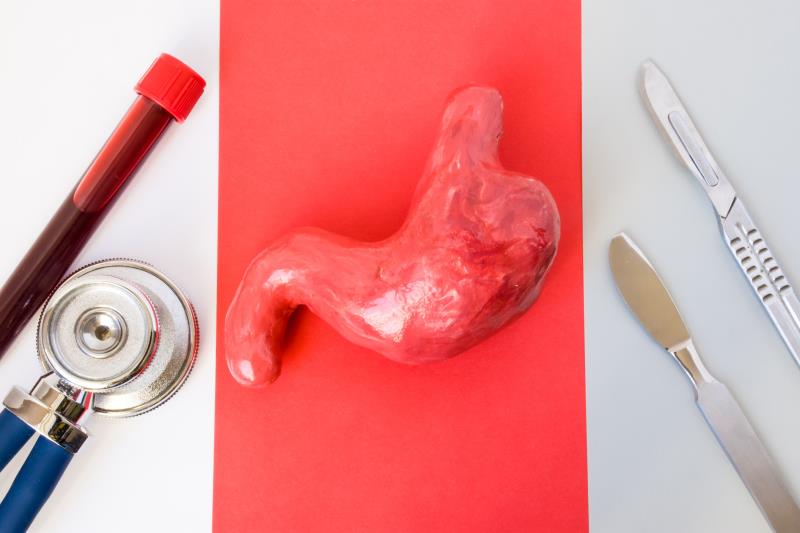
Real-world data from the PCORnet* Bariatric Study suggest that Roux-en-Y gastric bypass (RYGB) may be preferable to sleeve gastrectomy (SG) in inducing and maintaining type 2 diabetes (T2DM) remission.
“[M]ost patients who had [either procedure] experienced T2DM remission at some point over 5 years of follow-up. [However,] patients who had RYGB showed slightly higher T2DM remission rates, better glycaemic control, and fewer T2DM relapse events than patients who had SG,” said the investigators.
Significantly greater weight loss at 1 year (mean difference, 6.2 percentage points) and 5 years post-surgery (mean difference, 8.1 percentage points; p<0.001 at both time points) was observed with RYGB vs SG. At 5 years, there was a 10.2-kg difference (p<0.001) in weight loss between those who underwent RYGB and SG, favouring the former. [JAMA Surg 2010;doi:10.1001/jamasurg.2020.0087]
T2DM remission – first post-surgical occurrence of HbA1c <6.5 percent following ≥6 months (including both pre- and/or post-surgical periods) without T2DM medications – was slightly higher in the RYGB than SG group (hazard ratio [HR], 1.10, 95 percent confidence interval [CI], 1.04–1.16; p=0.007). It was estimated that 59.2 and 55.9 percent of those who underwent RYGB and SG, respectively, would experience remission at 1 year, and 86.1 and 83.5 percent, respectively, at 5 years post-surgery.
A total of 6,141 patients who experienced T2DM remission were followed up for relapse (HbA1c ≥6.5 percent and/or T2DM medication prescription) over a median 2.4 years.
T2DM relapse was less frequent among patients who underwent RYGB than SG (HR, 0.75, 95 percent CI, 0.67–0.84). Estimated relapse rates at 1-year post-remission were 8.4 and 11.0 percent in the RYGB and SG groups, respectively, and 33.1 and 41.6 percent, respectively, at 5 years.
Patients who underwent RYGB also had a 0.22 and 0.45 percentage greater reduction in HbA1c at 1 and 5 years, respectively, compared with those who underwent SG (p<0.001 at both time points).
The proportion of patients with poorly controlled HbA1c (≥8.0 percent) declined at 1 year of follow-up post-surgery (from 24.6 to 6.7 percent [RYGB] and from 17.5 to 8.3 percent [SG]), before increasing to 16.2 and 22.4 percent in the respective groups at 5 years.
“[T]hese results indicate that RYGB is associated with better long-term T2DM and weight outcomes than SG in real-world clinical settings,” said the investigators. “Estimating the likelihood of T2DM remission [as well as adverse events] could help inform patients’ and clinicians’ discussions of procedure choice.”
Patients with a lower likelihood of remission (eg, older age, insulin or complex T2DM medication use, higher HbA1c level**) may derive greater benefits with RYGB. Conversely, patients more likely to achieve remission would have similar outcomes regardless of surgery type, they said.
“[N]o one weight-loss surgical procedure is the best choice for every patient because trade-offs are associated with each,” noted co-principal investigator Associate Professor Kathleen McTigue from the University of Pittsburgh, Pittsburgh, Pennsylvania, US. “The choice requires personalized decision making that involves weighing the evidence about the pros and cons along with each person’s individual circumstances and preferences.”
The study, conducted at 34 US sites, involved 9,710 adults with T2DM (mean age 49.8 years, 72.6 percent female, mean HbA1c 7.2 percent, mean BMI 49 kg/m2) who had undergone bariatric surgery (RYGB [64.2 percent] or SG [35.8 percent]) between January 2005 and September 2015. Patients were followed up for a median 2.7 years.